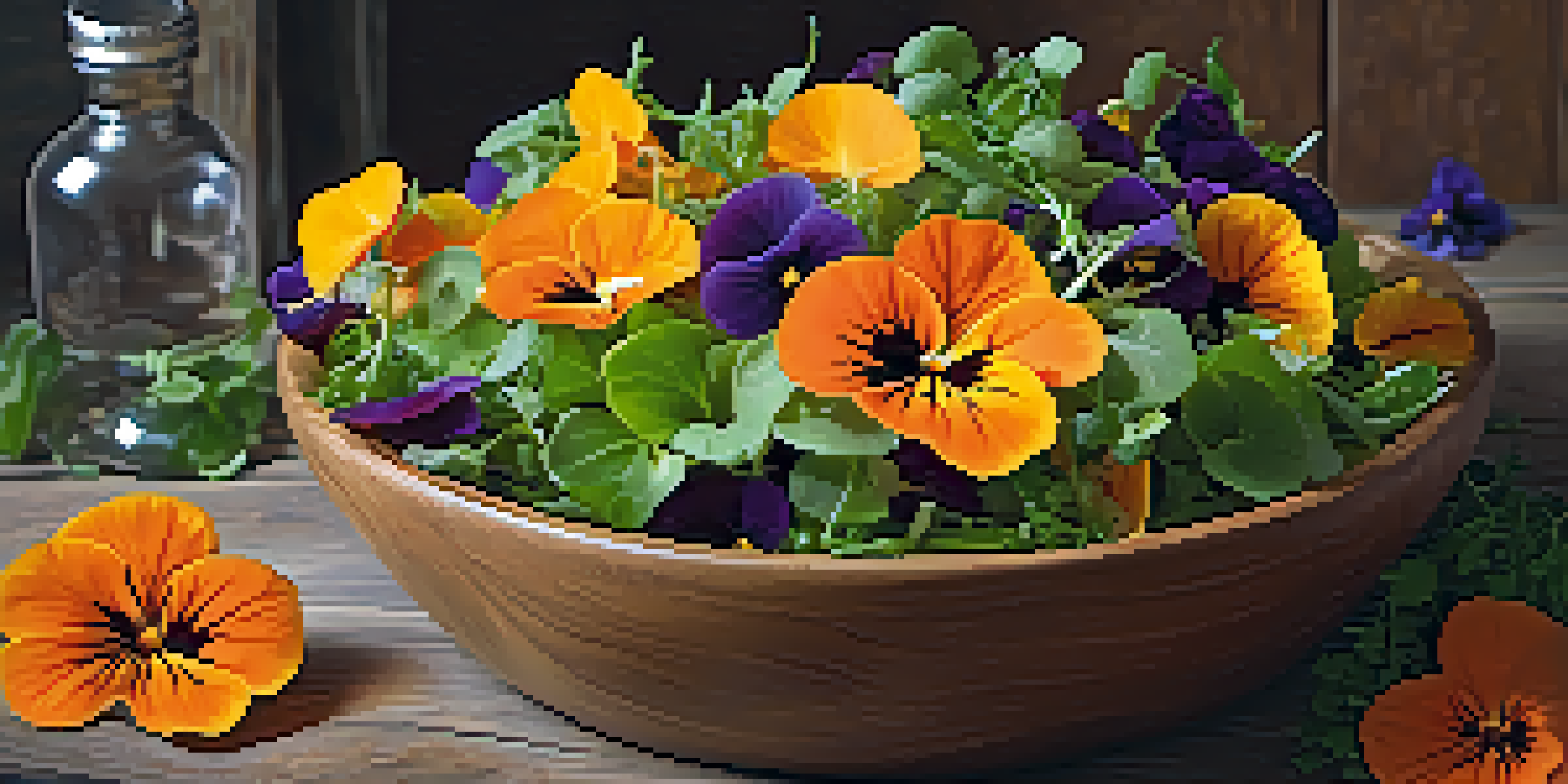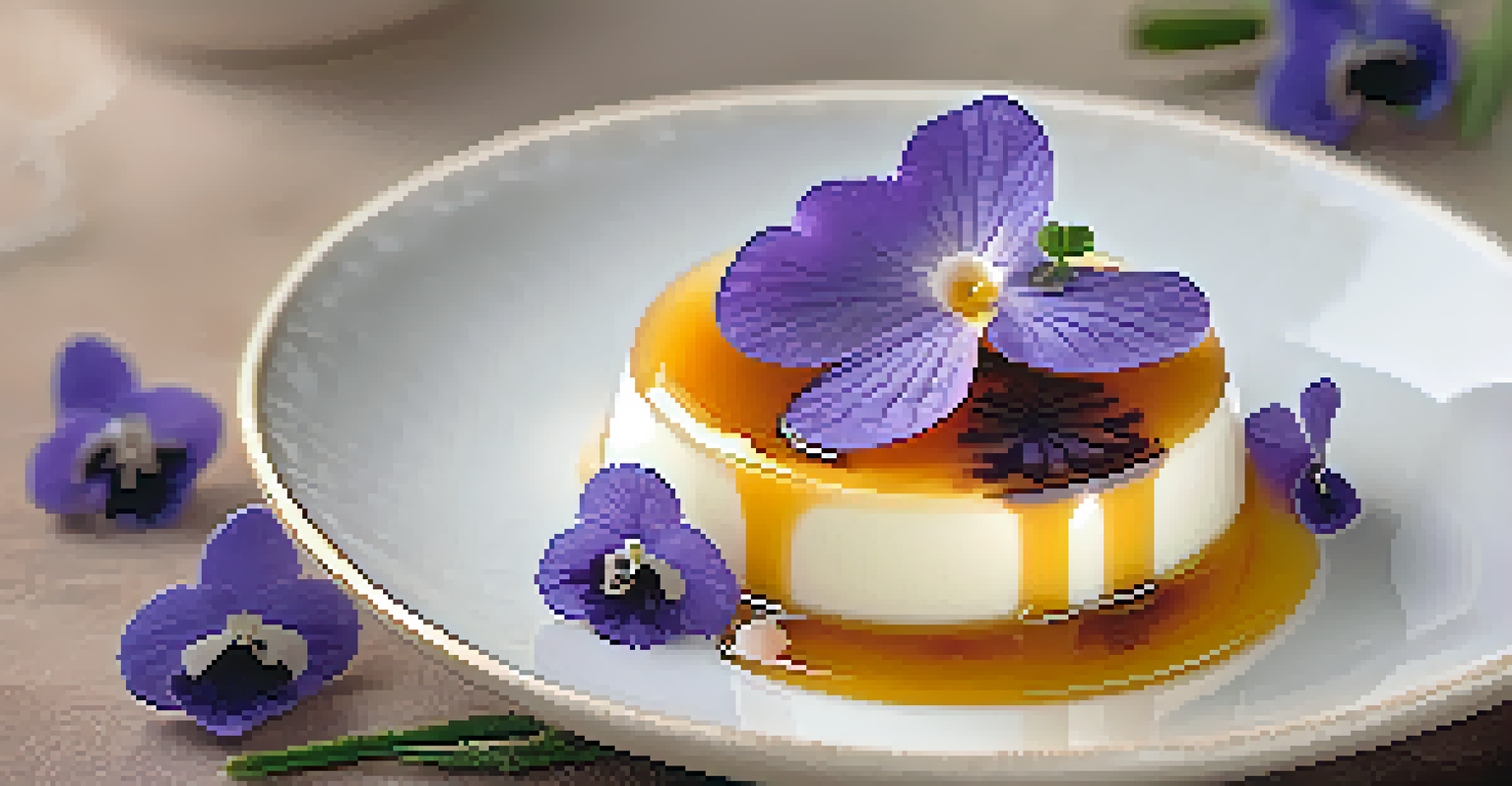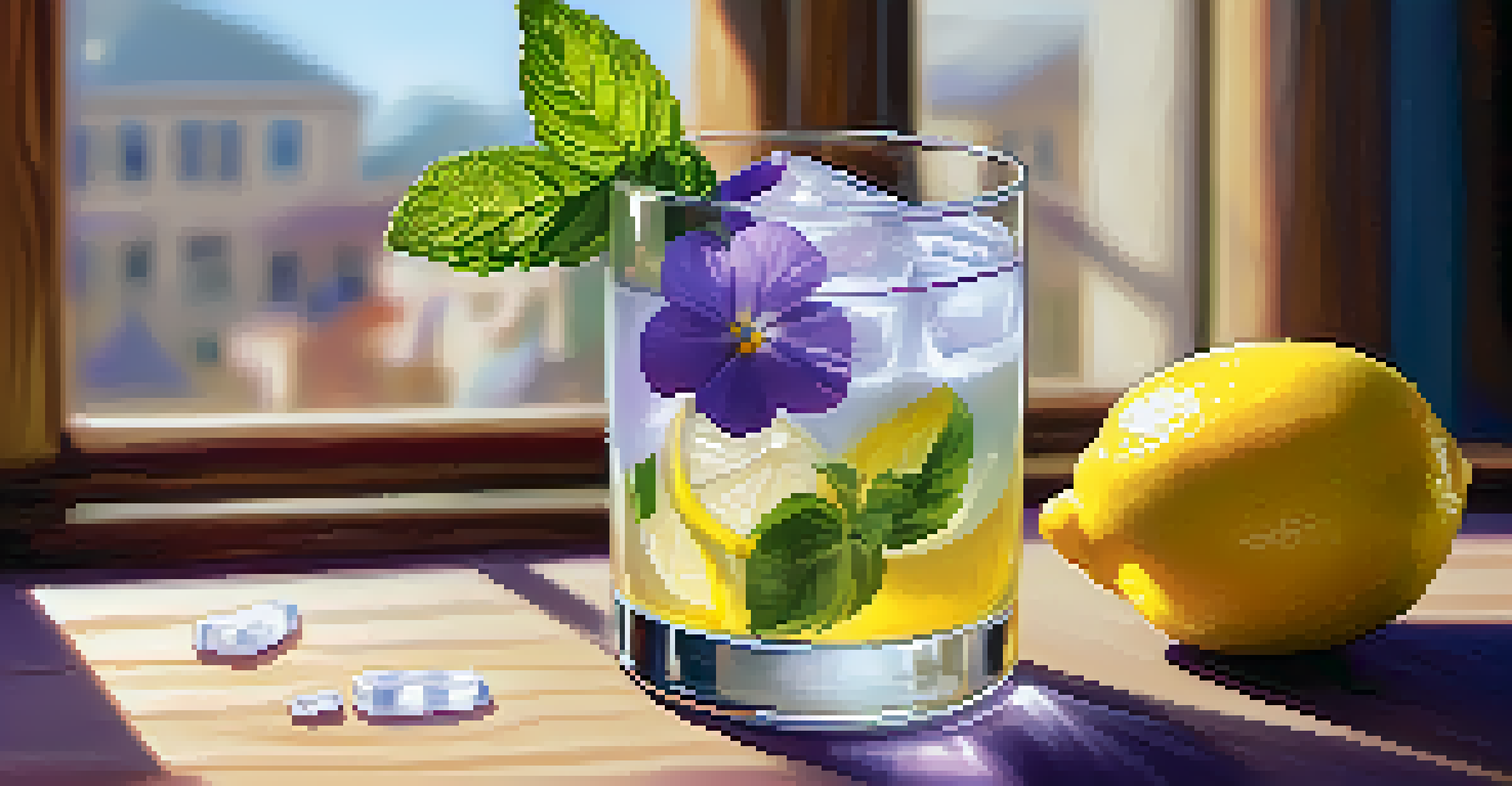Edible Flowers: Adding Color and Elegance to Food Art

What Are Edible Flowers and Why Use Them?
Edible flowers are blossoms that can be safely consumed, adding a unique twist to dishes. They come in various colors, shapes, and flavors, making them perfect for enhancing visual appeal. Beyond aesthetics, many edible flowers also have distinct tastes that can complement or contrast with your food.
Food is not just what we eat, but how we present it and how it makes us feel.
Using edible flowers can elevate your culinary creations, transforming an ordinary plate into a work of art. Imagine a vibrant salad topped with bright nasturtiums or a delicate dessert adorned with lavender blossoms. These flowers not only catch the eye but can also spark conversations at the dining table.
Incorporating edible flowers into your cooking is a wonderful way to connect with nature and bring freshness to your meals. Plus, they often carry health benefits, as many are rich in vitamins and antioxidants. So, why not bring the garden to your kitchen?
Popular Edible Flowers and Their Flavors
Some of the most popular edible flowers include nasturtiums, pansies, and violets, each offering unique flavors. Nasturtiums have a peppery taste, reminiscent of arugula, while pansies are mild and slightly sweet, perfect for salads. Violets, on the other hand, bring a subtle floral sweetness that can brighten up desserts.

Other notable mentions are chamomile, known for its calming properties, and hibiscus, which adds a tangy kick to beverages. Sunflowers can also be used, with the petals providing a slightly nutty flavor. Exploring these flowers can open up a world of culinary creativity.
Edible Flowers Enhance Dishes
Incorporating edible flowers adds unique flavors and vibrant colors, elevating the visual and taste appeal of your meals.
When selecting edible flowers, it's essential to ensure they are pesticide-free. Many flowers from the garden or farmers' market are safe, but always double-check before using them in your dishes. This way, you can enjoy their beauty and taste without any worries.
How to Incorporate Edible Flowers into Your Cooking
Incorporating edible flowers into your dishes can be as easy as adding them to salads, desserts, or even drinks. For instance, sprinkle a handful of petals over a fresh green salad to add color and flavor. You can also use them to top cakes or cupcakes for a stunning visual effect.
The beauty of nature is reflected in the art of cooking.
Another creative way to use edible flowers is by infusing them in syrups or oils. For example, lavender-infused syrup can elevate your lemonade or cocktails, adding a sophisticated twist. With a little imagination, the possibilities are endless.
Don't be afraid to experiment with different combinations and presentations. Consider creating a flower-infused ice cube to add to your favorite beverage, or make a beautiful flower crown salad. It’s all about letting your creativity bloom!
Sourcing Edible Flowers Safely
When it comes to sourcing edible flowers, quality and safety should be your top priorities. Local farmers' markets and organic grocery stores are often great places to find fresh, pesticide-free flowers. Alternatively, you can grow your own edible flowers at home for ultimate freshness and peace of mind.
If you decide to forage for wild edible flowers, make sure to do your research first. Not all flowers are safe to eat, and some can be toxic. It's crucial to be able to identify the flowers accurately and know their safety status before consuming them.
Health Benefits of Edible Flowers
Many edible flowers offer nutritional advantages, such as anti-inflammatory properties and antioxidants that support overall health.
Always wash edible flowers gently before using them, as they may have dirt or insects on them. A quick rinse under cold water followed by a gentle pat dry will ensure they are clean and ready to enhance your culinary creations.
Edible Flowers in Culinary Traditions Worldwide
Edible flowers are not a new trend; they have been used in various culinary traditions around the world for centuries. In Asian cuisine, flowers like chrysanthemums and lotuses are often incorporated into teas and dishes, adding flavor and beauty. Meanwhile, in Mediterranean cooking, you might find zucchini blossoms stuffed with cheese and herbs.
In Mexican cuisine, the use of edible flowers such as squash blossoms is quite popular, often featured in quesadillas or soups. These flavors and presentations showcase the versatility of edible flowers across different cultures and cuisines.
Exploring these culinary traditions can inspire your own cooking, encouraging you to experiment with flavors and styles you may not have considered before. Embracing edible flowers opens up a dialogue with the rich history of food from around the globe.
Creating Stunning Floral Arrangements on Your Plate
One of the most exciting aspects of using edible flowers is their ability to transform a simple dish into a stunning visual masterpiece. Arranging flowers artfully on a plate can create an eye-catching presentation that delights the senses. Think of it as painting with nature, where each flower adds a splash of color and texture.
Consider the balance of colors and shapes when arranging your flowers. For example, a bright yellow nasturtium can contrast beautifully with the delicate purple of an edible violet. This not only makes the dish visually appealing but also creates an inviting atmosphere for your guests.
Sourcing Flowers Safely
It's essential to source edible flowers from trusted suppliers or grow them at home to ensure they are pesticide-free and safe to consume.
Remember, less is often more when it comes to floral arrangements on food. A few strategically placed flowers can evoke elegance without overwhelming the dish. It’s all about finding the right harmony between the flowers and the food.
Health Benefits of Edible Flowers
Beyond their beauty, many edible flowers bring a wealth of health benefits to the table. For instance, calendula is known for its anti-inflammatory properties, while chamomile can aid digestion and promote relaxation. Incorporating these flowers into your meals can enhance not just the flavor but also the nutritional value.
Some flowers are rich in antioxidants, which help combat free radicals in the body, promoting overall health. For example, hibiscus is loaded with antioxidants and can even help lower blood pressure when consumed as a tea. By adding a few edible flowers to your plates, you’re not only beautifying your food but potentially boosting your health.

However, it’s always good to remember that moderation is key. While edible flowers can enhance your diet, they should complement a balanced nutrition plan. So, embrace these colorful additions and enjoy the benefits they bring!